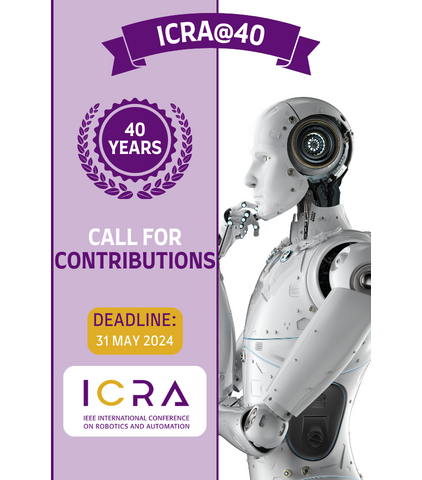Special Section on Wearable Robots
Special Section: Volume 38, Number 3, June 2022
Guest Editors
Juan Moreno, Spanish National Research Council
Nicola Vitiello, Scuola Superiore Sant'Anna
Helen Huang, North Carolina State University
Conor J. Walsh, Harvard University
Samer Mohammed, University of Paris-Est Créteil
Overseeing Editor
Mark Yim, University of Pennsylvania
Aims and Scope
The call for contributions to this Special Section of the IEEE TRANSACTIONS ON ROBOTICS received an impressive response from the community. A total of 40 abstracts were submitted, from which 25 submissions were encouraged. Ten of these submissions were accepted and are being published in this special section. Topics covered in these papers span the research areas described previously, and include the core technologies for the design of soft robotic suits, novel optimization approaches for human-in-the-loop control of exoskeletons, mechanical solutions for upper limb wearable robots and cabledriven exosuits, analyses of myoelectric control as an alternative to force control of exosuits, human-in-the-loop optimization of assistance, adaptive controllers for powered prostheses, torque control of lightweight direct-drive exoskeletons, mechanical designs to compensate joint misalignments, and neuromechanical modeling approaches to adaptive control of bilateral ankle exoskeletons.
J. Moreno, N. Vitiello, H. Huang, C. Walsh, and S. Mohammed
[1] Soft Robotic Suits: State of the Art, Core Technologies, and Open Challenges, M. Xiloyannis, R. Alicea, A.-M. Georgarakis, F. L. Haufe, P. Wolf, L. Masia, and R. Riener
[2] Myoelectric or Force Control? A Comparative Study on a Soft Arm Exosuit, N. Lotti, 2. Xiloyannis, F. Missiroli, C. Bokranz, D. Chiaradia, A. Frisoli, R. Riener, and L. Masia
[3] Neuromechanical Model-Based Adaptive Control of Bilateral Ankle Exoskeletons: Biological Joint Torque and Electromyogram Reduction Across Walking Conditions, G. Durandau, W. F. Rampeltshammer, H. van der Kooij, and M. Sartori
[4] Iterative Learning of Human Behavior for Adaptive Gait Pattern Adjustment of a Powered Exoskeleton, K.-W. Park, J. Choi, and K. Kong
[5] Human-in-the-Loop Optimization of Exoskeleton Assistance Via Online Simulation of Metabolic Cost, D. F. N. Gordon, C. McGreavy, A. Christou, and S. Vijayakumar
[6] Powered Knee and Ankle Prosthesis With Adaptive Control Enables Climbing Stairs With Different Stair Heights, Cadences, and Gait Patterns, S. Hood, L. Gabert, and T. Lenzi
[7] Modeling and Stiffness-Based Continuous Torque Control of Lightweight Quasi-Direct-Drive Knee Exoskeletons for Versatile Walking Assistance, T.-H. Huang, S. Zhang, S. Yu, M. K. MacLean, J. Zhu, A. Di Lallo, C. Jiao, T. C. Bulea, M. Zheng, and H. Su
[8] Shoulder-sideWINDER (Shoulder-side Wearable INDustrial Ergonomic Robot): Design and Evaluation of Shoulder Wearable Robot With Mechanisms to Compensate for Joint Misalignment, D. Park, S. Toxiri, G. Chini, C. D. Natali, D. G. Caldwell, and J. Ortiz
[9] Design, Development, and Control of a Hand/Wrist Exoskeleton for Rehabilitation and Training, M. Dragusanu, M. Z. Iqbal, T. L. Baldi, D. Prattichizzo, and M. Malvezzi
[10] Design and Validation of a Cable-Driven Asymmetric Back Exosuit, J. M. Li, D. D. Molinaro, A. S. King, A. Mazumdar, and A. J. Young







